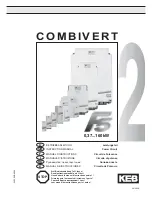
12
POLY NOTE ASSIGN
(
Regular Cyclic, Memory Cyclic, Reset, default: Regular Cyclic
)
- This parameter sets how incoming MIDI notes are assigned to voices. This setting only has any effect
if polyphonic mode is active. Options are:
Regular Cyclic Mode (default)
Memory Cyclic
Reset Mode
Regular Cyclic Mode:
Incoming MIDI notes are assigned the next free voice. (Even if it is the same note played repeatedly).
If, for instance you have channels A+B+Aux12+34 set to poly, each time you play a note it will step
through and assign channels A then B then Aux12 then Aux34 then back to A again as you play.
If you hold a note, new notes will be assigned to the next voice in that order that is free.
If all voices are already assigned to held notes, the next note will use the lowest voice held.
Memory Cyclic:
This mode is similar to the regular cyclic mode described above. However, a new note will be
assigned to the same voice as before if that voice is not currently playing and has not been re-
assigned. For example if you play notes C D D C then they will be played by channels A B B A, rather
than A B Aux12 Ax34 as they would in Regular Cyclic Mode. If all voices are already assigned to held
notes, the next note will use the lowest voice held.
Reset Mode:
As you play, the lowest free voice (channel A being the lowest) is assigned to the new note.
If all voices are already assigned to held notes, the next note will use the lowest voice held.
More information about using Polyphonic Mode:
Note that if you assign any of the Auxes to be polyphonically controlled, then you will have to
configure them as either CV or Gate outputs. It is recommended that you use the odd numbered
Auxes for CV and the even numbered ones for Gate to preserve the pattern of CV followed by gate
across the back panel, however this is not essential.
In order for the Auxes to perform in a similar way to channels A and B, you will also have to
change the following parameters on the auxes which are acting as CVs (the odd numbered ones).
Ax1 LFO Dpth Ctl - set to: 1 Mod Wheel
Ax1 LFO Dpth Amt - set to: at Cntl Max 9
The same changes for auxes 3 & 5 (Ax3 & Ax5) if they are also to be polyphonically controlled.
This is so that use of the mod wheel will be the same as for channels A and B.
Change the following parameters on the auxes acting as Gates (the even numbered ones).
Ax2 LFO Dpth Ctl - set to: Ignore Cntrllers
The same changes for auxes 4 & 6 (Ax4 & Ax6) if they are also to be polyphonically controlled.
This is so that the gate outputs will not be modulated too.
When a channel (or pair of Aux outputs) is assigned as polyphonic, it becomes a slave to Channel A
and takes its MIDI channel from Channel A.
In Polyphonic Mode - Note priority for any active polyphonic channels is always set by the "Poly Note
Assign" parameter. Individual channel note assignments are overridden.
You may also need to set the Gate Voltage (and/or gate polarity) of any auxes used in poly mode







































